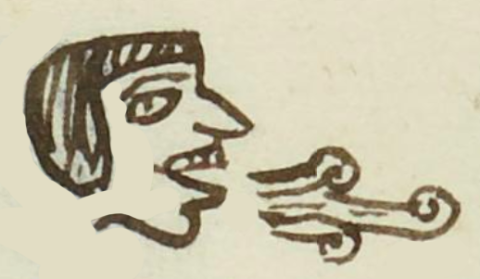Quito (MH842v)
This black-line drawing of the simplex personal name Quito ("He Said It," attested here as a man's name) shows a man's head in profile, facing toward the viewer's right. Coming out of his mouth are speech scrolls, providing the essence of the verb itoa (or ihtoa, with the glottal stop, "to say"). They represent what he said (oral communication).
Stephanie Wood
In this case, the words are oral, coming out of the man's mouth. They are (the tlatolli or tlahtolli, with the glottal stop) that he has spoken. Words (tlatolli represented as scrolls) are rarely shown in glyphs as written down. Three examples appear below.
anto quito
Antonio Quito
Stephanie Wood
1560
Jeff Haskett-Wood
speech, speak, volutes, scrolls, hablar, palabras, volutas, nombres de hombres

-c-, third person singular object pronoun (also -qui-), https://nahuatl.wired-humanities.org/content/c-2
itoa, to say, to speak, https://nahuatl.wired-humanities.org/content/itoa
Matrícula de Huexotzinco, folio 842v, World Digital Library, https://www.loc.gov/resource/gdcwdl.wdl_15282/?sp=759&st=image
This manuscript is hosted by the Library of Congress and the World Digital Library; used here with the Creative Commons, “Attribution-NonCommercial-ShareAlike 3.0 License” (CC-BY-NC-SAq 3.0).








